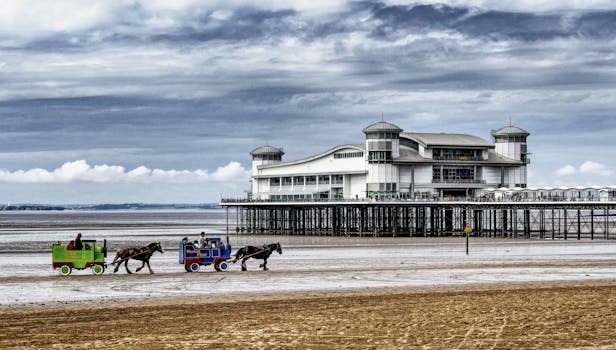The Return of the Carriage House: Accessory Dwellings 2.0
The charm and versatility of carriage houses were once a staple in older neighborhoods, serving as secondary dwelling units for extended family members or as a quaint rental property. Over the years, this type of real estate has fallen out of favor, but with housing affordability and density concerns on the rise, they are making a comeback. Accessory dwellings, also known as carriage houses 2.0, are becoming a popular solution for homeowners seeking additional living space or rental income. Let’s take a closer look at the return of the carriage house and how it is shaping the future of housing.
The Rise of the Accessory Dwelling
The concept of the accessory dwelling has been around for centuries. Carriage houses were initially built to house horses and carriages, but as horses became less common, they were converted into living spaces. These small homes were often built behind the main house on the property and were owned by the same family, allowing for easy access for family members or tenants.
In recent years, the demand for affordable housing has led to a resurgence of accessory dwellings. With rising housing costs and limited inventory, many homeowners are turning to this option to meet their housing needs. Additionally, as families become more multi-generational, these small homes provide an ideal solution for aging parents or adult children looking for some independence.
Benefits of Adding an Accessory Dwelling
There are several advantages to building an accessory dwelling on your property. First and foremost, it provides additional living space without the hassle of selling and moving. This can be particularly appealing for homeowners who love their neighborhood but need more room. Renting out the accessory dwelling also provides a steady stream of income, helping to offset the costs of homeownership.
From an environmental standpoint, these smaller homes are more energy-efficient and can help reduce a homeowner’s carbon footprint. They also provide an opportunity for sustainable living, as many accessory dwellings are built with eco-friendly materials and incorporate green infrastructure.
Legal Considerations
Before jumping into building an accessory dwelling, it’s essential to understand any legal restrictions or requirements. Each city and state has its own regulations, so be sure to check with your local government offices to determine what is allowed in your area.
In many cities, accessory dwellings are not permitted in all residential areas, and there may be limitations on the size and design of the unit. Some areas may also require a permit or license for rental properties, so it’s crucial to do your research and follow all necessary steps to avoid any legal issues.
The Future of Housing
The return of the carriage house is just one example of how housing trends are evolving and adapting to meet the changing needs of homeowners. As cities become more densely populated, and housing affordability continues to be a concern, creative solutions like the accessory dwelling will become even more prevalent.
Another benefit of accessory dwellings is their potential to revitalize older neighborhoods. As cities become more gentrified, accessory dwellings can add diversity to the housing stock and provide opportunities for more diverse residents to live in desirable areas.
Conclusion
As the demand for affordable housing increases, accessory dwellings are proving to be a viable solution. Not only do they provide additional living space and income potential, but they also offer environmental benefits and contribute to the diversification of urban housing. The return of the carriage house is just the beginning of a new era of innovative housing options.
With the rise of accessory dwellings, homeowners have the opportunity to add charm and character to their property while also addressing pressing housing concerns. As cities continue to grow and evolve, the role of accessory dwellings will become more prominent, shaping the future of housing for years to come.








